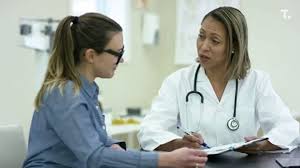
Abortion is a condition that afflicts women not only physically but also mentally. Deciding abortion is difficult for both the spouses. Abortion or termination of pregnancy is called abortion. Doctors perform abortions by drugs or surgery.
The process and safety of abortion depends on the stage of pregnancy. This means that in the early stages of pregnancy, abortion can be done by drugs whereas if a woman wants to get an abortion after the pregnancy is over, she may have to resort to surgery. The sooner the abortion occurs, the easier it will be.
In many cases the process of miscarriage is easy but it also has some side effects such as excessive bleeding, pelvic spasm, nausea and vomiting. However, if you are experiencing severe symptoms like excessive bleeding, fever, severe pain after having an abortion, contact a gynecologist immediately.
When will periods start after abortion
If there is an abortion during the first trimester, then after four to 12 weeks you should start having periods. The first menstrual period after an abortion may be lighter or shorter than normal, or it may also be normal after a surgical abortion. If the first menstrual period is longer than usual or is more in quantity then contact the doctor as soon as possible. If you have undergone a medical abortion which is caused by medication, you may have more normal bleeding in the first period after the abortion.
You can ovulate just after a miscarriage. However, this time may vary for different women, depending on how long the miscarriage has occurred.
During this time, removing all the remains from pregnancy is the first priority of your body. This includes, among other things, fetal tissue coming out of the uterus, and coming out as excessive bleeding. You can consider it the first menstrual period after abortion. It can occur within a day or within a week. If you undergo a medical abortion, fetal tissue can be removed by surgery.
It is important to mention that after abortion some women have to cope with problems even for two years in the menstrual cycle. The time of your menstruation and the amount of bleeding can change for several months.
Must read:Fibroids and Pregnancy: What You Should Know
Chances of getting pregnant after abortion
Doctors usually recommend not to conceive for at least 3 months after an abortion. If an abortion occurs in the middle or late, then it is said not to conceive longer. However, women who are illegitimate or have suffered miscarriages due to complications in pregnancy should wait longer. Pregnancy is normally safe when doctors make sure after the test.
A woman can become pregnant soon after an abortion. Ovulation in women is a natural phenomenon that is controlled by hormones. If no contraceptive option is used, there is a possibility of conception when the normal cycle resumes. So if you do not want to get pregnant again, use birth control methods after consulting a doctor.
Gestation can also be done within 7 to 10 days of miscarriage, even if the woman still has bleeding. It is necessary to use birth control techniques only after one week of termination of pregnancy. Women who have had an aspiration procedure or an initial abortion are more likely to become pregnant immediately. For women undergoing surgical abortion or dialysis and curation in the first trimester, doctors recommend waiting at least one month to heal the uterus.

Side effects of abortion
Immediate medical attention should be sought if you feel any danger symptoms after the abortion. In this situation sometimes the womb is completely emptied using manual vacuum aspiration or dilation and curation. This information can help you if immediate transport is not available or if the hospital is far away.
Excessive vaginal bleeding
Vaginal heavy bleeding is the most common problem after abortion. It is usually caused by the remains of the fetus remaining in the womb. This is called incomplete abortion. If the residue is removed, the bleeding often stops. Sometimes excessive bleeding also occurs due to the rupture of the cervix which needs to be sewn (stitches) to stop the bleeding. In such a situation, if it is not possible to get medical help immediately, try to stop the bleeding with the help of pads.
Shock
The shock of miscarriage is a shocking condition to a good good life in which symptoms such as heavy bleeding may also occur. Shock can also occur due to bleeding inside the body.
Infection
A mild infection can occur if the abortion is performed within 3 months (12 weeks) immediately after the last menstrual period.
Severe infection is an infection that spreads to the blood (sepsis). A woman is more likely to have a serious infection if the abortion was performed 3 or 4 months after the last monthly bleeding, or if the womb is hurt during the miscarriage. Sepsis is a very dangerous condition and can also cause shock. Infection can occur due to the following reasons:
1. By the use of clean hands or something has remained inside the womb.
2. The pregnancy may have left the remnants of pregnancy that cause infection.
3. If the woman already has an infection.
4. perforated into the wall of the abdomen.
Internal injury
When a hole or injury occurs in the womb using a sharp or sharp tool, this condition is called internal injury. These devices can also damage other internal organs, such as fallopian tubes, ovaries, bowels, and bladder. When a woman suffers an internal injury, there may be severe bleeding inside her abdomen but almost no vaginal bleeding.

Precautions after abortion
Your doctor will give you specific care instructions after your abortion. Sometimes these are not enough to reduce side effects. To reduce the side effects, you can take the following measures:
1. Use a heating pad, which helps reduce cramps.
2. Stay hydrated, especially when you are experiencing vomiting or diarrhea.
3. If possible, plan to stay at home so that you can rest better in your home.
4. Take medicines like Ibuprofen to reduce spasm and pain.
5. Massage at the place of stomach cramps.
6. Wear the correct and fit bra to relieve breast discomfort.
Must read:The best age for pregnancy? All you need to know.
